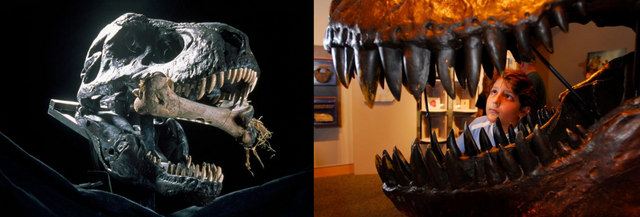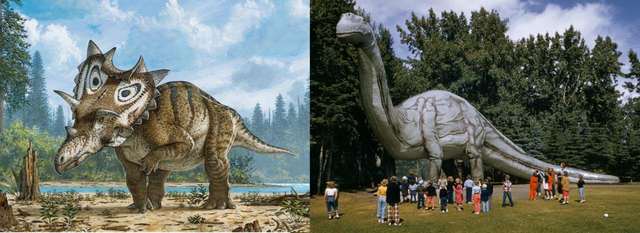'Life returned 'fast' to dino-killing impact site'
Life returned within just a few years to the site of the asteroid strike thought to have obliterated the dinosaurs some 65 million years ago, surprised scientists said Wednesday.

It was long hypothesised the crater would have been the last place for life to re-emerge, possibly hundreds of thousands of years after the catastrophe that wiped out three-quarters of life on Earth.
But analysis of cores drilled into the Chicxulub crater in Mexico revealed fossils of algae, plankton and even small, burrowing shrimp and worms already present "two to three years after impact," a research team said.
"We found that life returned to ground zero surprisingly fast," Chris Lowery of the University of Texas at Austin told AFP.
He co-authored a study, published in the scientific journal Nature, on what happened at the impact zone in the first 200,000 years after the so-called K-Pg mass extinction event.
"We found the oldest fossils within a layer of the core that we know was deposited by settling from turbid waters," explained Lowery.
These waters were full of sediment, churned up by landslides and tsunamis after the impact, which settled over the course of a few years.
"We can calculate the amount of time this took using an equation called Stokes' Law because we know the size of the sediments, their density, and the depth of the water," Lowery said.
"Thus, we can say with confidence that this layer was deposited within a few years. Because we find the first fossils of post-impact organisms within this layer, we know that they lived and died in the crater within years of the impact."
Illinois-born Stephen Brusatte is one of the stars of modern paleontology. A former National Geographic grantee, he has discovered 10 new dinosaur species. He has also led groundbreaking scientific studies that have rewritten the history of these magnificent creatures which, thanks to Hollywood and countless children stories, haunt our imaginations today like never before.

In his new book, The Rise And Fall Of The Dinosaurs, Brusatte tells the epic tale of the dinosaurs’ rise to dominance and extinction, taking us on a thrilling journey back in time to the Mesozoic Era, and across the world to the far-flung places he has hunted for fossils, from Argentina, to China, to the American Southwest.
When we caught up with him by phone at the University of Edinburgh, in Scotland, where he is now a fellow, he explained how new technology is revolutionizing our understanding of Tyrannosaurus rex; why China is a hotspot for fossil dinosaurs; and how many of today’s paleontologists are women.
Let’s jump right in with the dinosaur that has captured our imaginations more than any other. Give us your “unauthorized biography” of T. rex, and explain how new technologies are enhancing our understanding of “The King Of The Dinosaurs.”
- Sixth mass extinction -
Previous studies had noted slow recovery around the crater, with sites in the North Atlantic and the Gulf of Mexico taking longer to return to pre-extinction levels -- up to 300,000 years -- than regions further away.
Scientists had hypothesised this could be the result of toxic metals ejected by the impact poisoning nearby waters.
If this was the case, the crater itself would have been the last place where life reemerged.
The researchers believe their findings have implications for the future.
"The K-Pg mass extinction is the most recent major mass extinction event, and it's also probably the only major event in Earth history that happened faster than modern human-induced climate change and pollution," Lowery said.

Scientists say Earth is enduring its sixth mass species extinction, the first since the demise of the dinosaurs, in half-a-billion years.
"The recovery of life after this event is therefore of great interest because it can help us to understand how ecosystems might recover from modern biodiversity loss caused by climate change, pollution, overfishing et cetera," the researcher said.
The study results suggest that ecosystems will recover at different rates, determined by local ecological factors rather than regional or global ones. Some will bounce back faster than others.
"The only way to predict this will be to closely study all of these ecosystems," Lowery said.